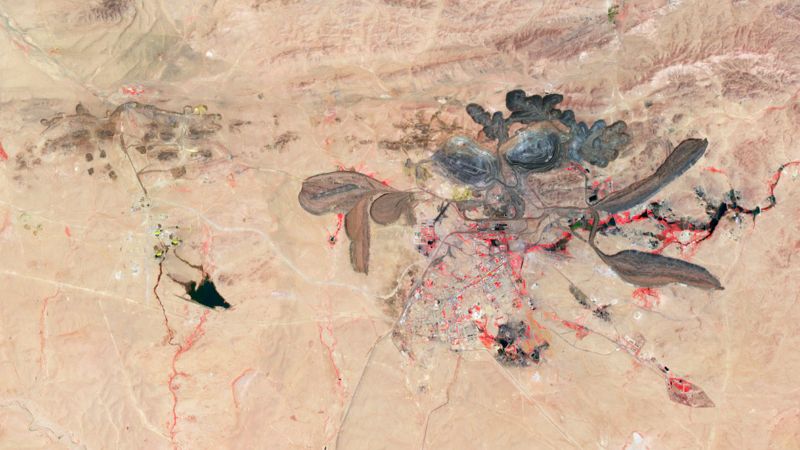No climate neutrality without critical raw materials
Since the Russian war of aggression in Ukraine and its attempted gas blackmail, Europe has been pushing ahead with the energy transition, which includes the perspective of supply security.1 Climate neutrality is a hot topic, and as a long-term goal, it promises to free us from the shackles of fossil fuels. Yet we overlook the fact that renewable energies threaten to make us dependent in new ways.
Because for the energy transition, Europe needs large quantities of raw materials to which it has no direct access. These include elements such as cobalt, lithium and silicon as well as many rare earth metals with such exotic names as dysprosium and neodymium. Because these raw materials are indispensable for wind turbines, lithium-ion batteries and electric motors, they are referred to as “critical”.2 But they are also considered problematic – critical raw materials are largely mined and processed in authoritarian states with low environmental and labour standards. In the case of rare earth metals, for example, the EU is dependent on imports from China for over 98 percent of its production.3
Climate neutrality with dirty raw materials?
This means that anyone who calls for climate neutrality needs to take responsibility as well. There are two mistakes that we have to avoid. First, it’s essential that the extraction and processing of critical raw materials for the energy and mobility transition doesn’t cause more environmental damage than it prevents. Second, fossil fuels from autocratic regimes should not be replaced by raw materials from other autocratic regimes. In essence, this means that if we want wind turbines, electric mobility and solar panels, then we in Europe need to increasingly mine the raw materials required for them ourselves.
That’s how the EU sees it as well. China’s restrictions on exports of rare earth metals in 2010 were a wake-up call for European states; since then, topics such as domestic raw material extraction, circular use and diversified supply chains have figured high on the list of priorities.4 The high-profile discovery of rare earth metals in Sweden in January 2023 comes as a logical consequence of intensified exploratory activities. And, of course, this is good news; however, it takes a good 10 to 15 years from planning to the commissioning of a mine.5 This also shows that we can’t reduce import dependency as quickly as we did with Russian natural gas.
Supply security comes at a cost
Therefore, Europe-wide production of critical metals would be enormously significant, but there is resistance here. Today, these raw materials are imported cheaply from countries with large deposits and small regulatory hurdles. These include countries such as the DR Congo for cobalt, Chile for lithium, South Africa for platinum, Russia for palladium and China for rare earths, tungsten, titanium or graphite. Two thirds of all lithium-ion batteries produced come from China, on which the EU is particularly dependent. Since mining and processing pollute the groundwater and some mines use child labour, the sector has a bad reputation.
However, Europe is in a relatively good position to meet more of its own raw material needs for the energy transition. Rare earth metals are not as rare as the name suggests – experts suspect that there are further deposits in European countries. For mining regions this brings opportunities to move away from coal towards new raw materials and to preserve jobs.6 Meanwhile, Sweden and Finland have shown that raw material extraction can be environmentally compatible if it is done responsibly.7 Strong industrial policy incentives and the willingness to invest in previously unprofitable areas such as recycling would be necessary prerequisites.8
Multiple opportunities for Europe
If Europe manages to establish resilient raw material supply chains with high environmental standards for green technologies, this would be a victory on multiple fronts.
First, each new responsible extractive mine would deliver environmental benefits by serving as a model for other mines and promoting ecological change. Second, a European ecosystem of advanced resource mines, processing plants, battery factories and recycling plants would create new jobs in a circular economy. Third, Europe could reduce its dependence on autocratic states and would be less susceptible to blackmail. Finally, clean tech and other sectors will benefit if they have their own reliable supply of the key raw materials of tomorrow.
